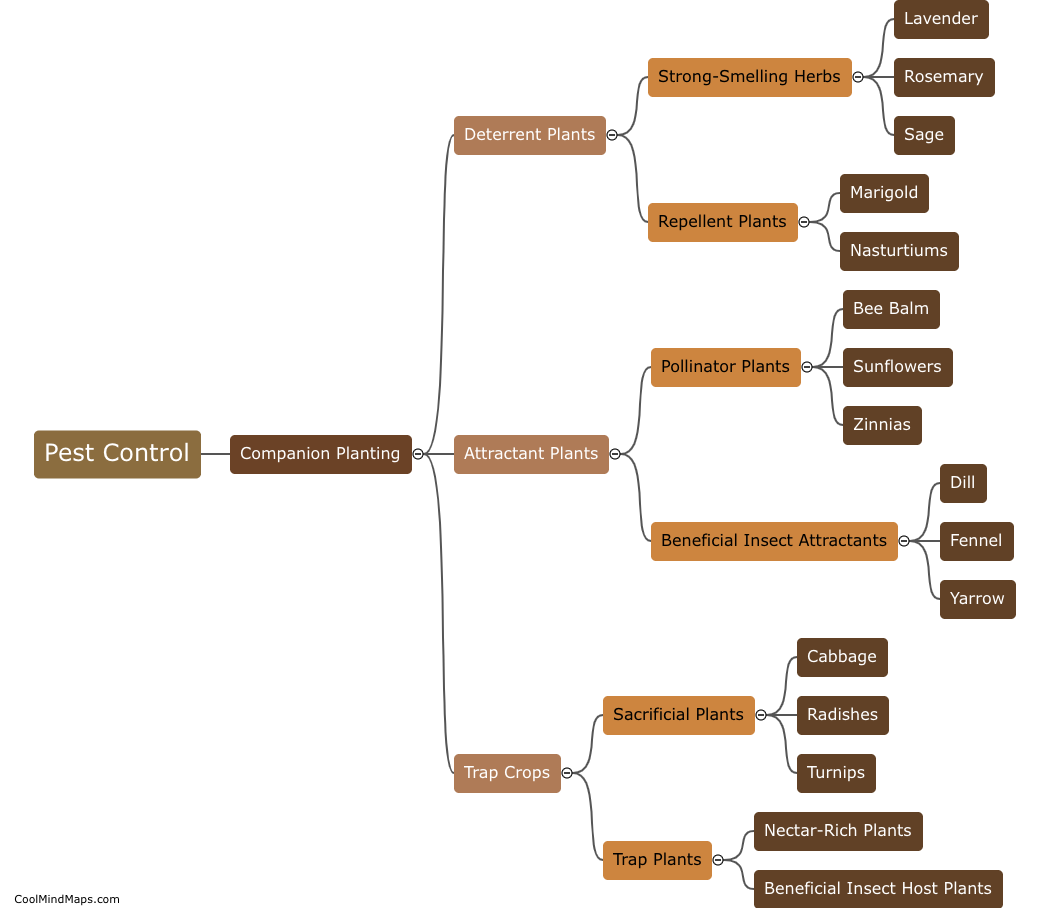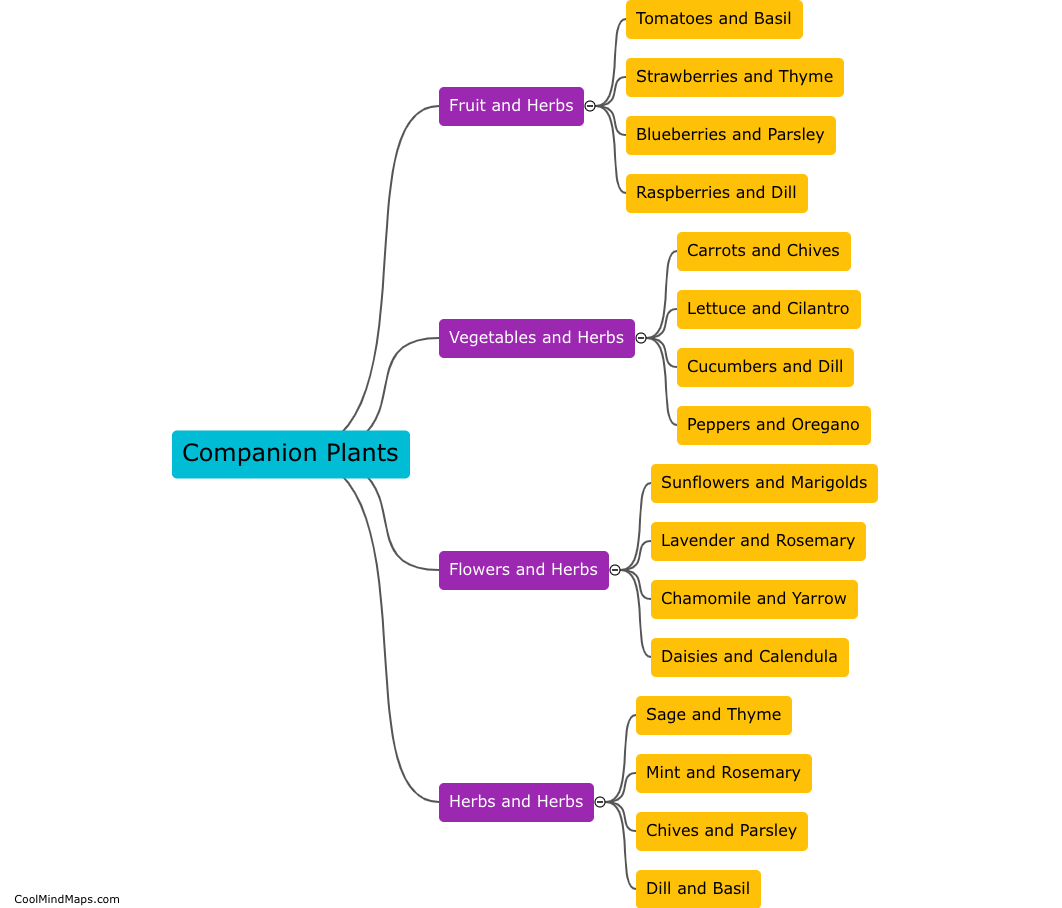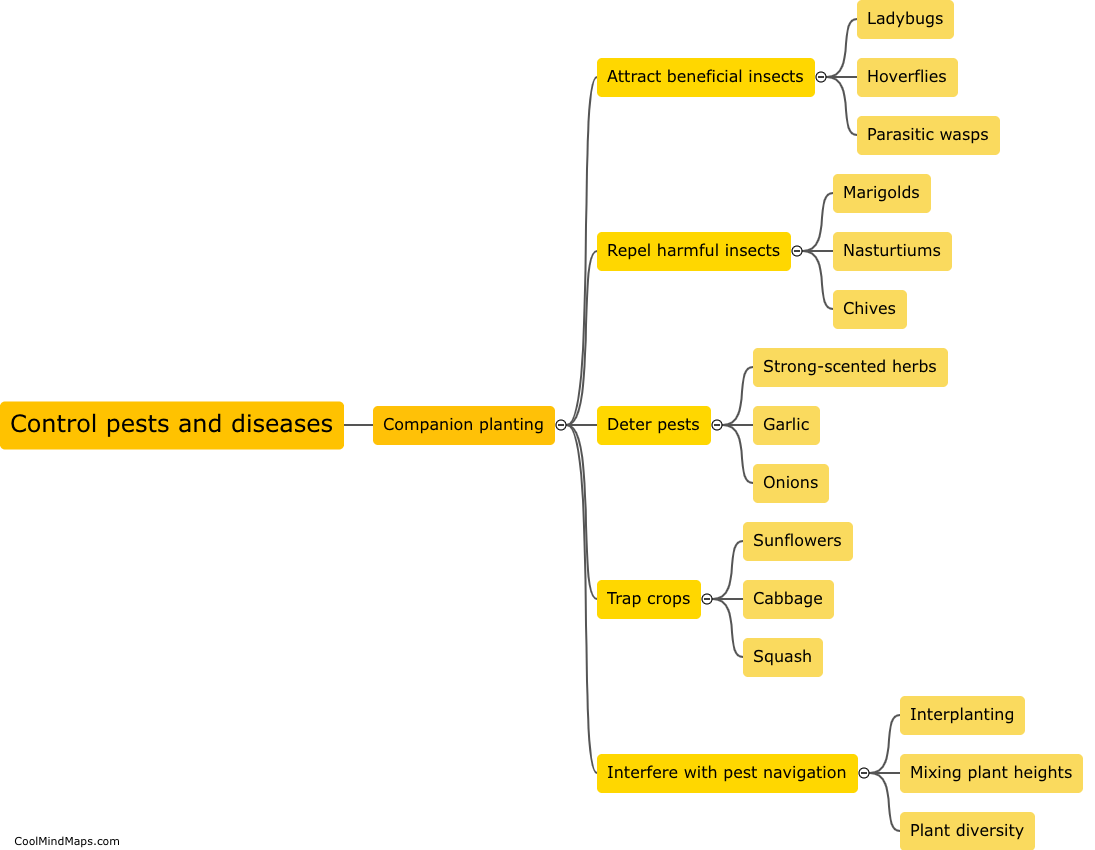How does companion planting improve pest control?
Companion planting is an ancient practice of planting certain plants together to enhance their growth and mutually benefit from each other. One of the significant advantages of companion planting is its ability to improve pest control naturally. By strategically pairing certain plants, insects and pests can be deterred or even eliminated without the use of harmful chemicals. Some examples include planting marigolds next to vegetables, as their strong scent repels pests, or growing garlic and onions to repel aphids and other pests. Additionally, some plants attract beneficial insects like ladybugs and praying mantises, which are natural predators of common garden pests. Overall, the diversity and harmony created by companion planting create a natural balance that minimizes the reliance on pesticides and promotes a healthier ecosystem in the garden.

This mind map was published on 24 January 2024 and has been viewed 79 times.











